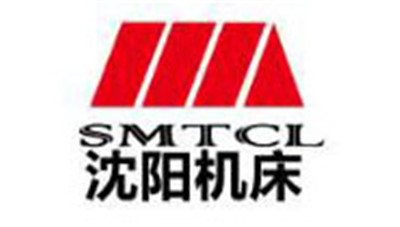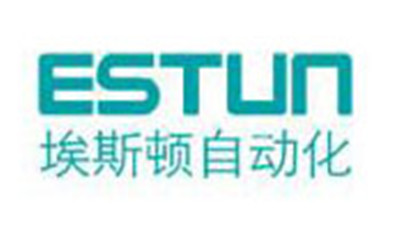How to Choose the Right Dry Transformer for Your Industrial Needs
Table of Contents
- Understanding the Basics of Dry Transformers for Industrial Applications
- Key Factors to Consider When Selecting a Dry Transformer
- Common Types of Dry Transformers and Their Uses in Industries
- Assessing Efficiency and Performance Ratings for Optimal Selection
- Cost Analysis: Balancing Price and Quality in Transformer Choices
- Maintenance Tips to Enhance the Lifespan of Your Dry Transformer
- FAQS
- Conclusion
- Related Posts
 Picking the right dry transformer for your industrial setup really matters if you want things to run smoothly, safely, and reliably. Companies like Dezhou Xinping Electronics Co., Ltd.—they've been around since 2001 and are known for their precision electronic transformers—show us just how important a good choice can be for your operations.
Dry transformers are becoming a popular pick in many industries because they’re durable and don’t need a ton of maintenance. In this blog, I’ll walk you through some key factors to consider when choosing a dry transformer. My goal is to help you make smarter decisions based on your specific needs. Trust me, choosing the right one can really boost your power distribution and help your business stay on top of its game.
Picking the right dry transformer for your industrial setup really matters if you want things to run smoothly, safely, and reliably. Companies like Dezhou Xinping Electronics Co., Ltd.—they've been around since 2001 and are known for their precision electronic transformers—show us just how important a good choice can be for your operations.
Dry transformers are becoming a popular pick in many industries because they’re durable and don’t need a ton of maintenance. In this blog, I’ll walk you through some key factors to consider when choosing a dry transformer. My goal is to help you make smarter decisions based on your specific needs. Trust me, choosing the right one can really boost your power distribution and help your business stay on top of its game.
Understanding the Basics of Dry Transformers for Industrial Applications
So, if you're looking to pick out a dry transformer for your industrial setup, it's really important to get the basics down first. These transformers are known for being reliable and efficient, and they come in all sorts of specs to fit different needs. In a lot of industrial environments, they actually have some pretty big advantages—like being more eco-friendly, requiring less maintenance, and offering better safety features. Pretty handy, right?
Here's a tip: take a good look at your power needs. Think about the voltage levels, how much power you'll need, and what kind of loads you'll be running. That way, you know you're choosing a transformer that can handle your stuff without fuss.
And don't forget to check out cooling options. Most dry transformers cool themselves using air, which makes them great if your facility doesn't have a fancy cooling system. Just make sure there's enough ventilation—that'll help them last longer and work smoothly.
By the way, Dezhou Xinping Electronics Co., Ltd. has been around since March 2001. They're a high-tech company specializing in precision electronic transformers. They've put a lot of effort into innovative manufacturing, so their products are really tailored to meet all kinds of industrial needs—helping keep your operations running efficiently and reliably.
Key Factors to Consider When Selecting a Dry Transformer
So, when you're picking out a dry transformer for your industrial setup, there are a few important things you really want to keep in mind. First off, double-check the voltage and power ratings—gotta make sure it’s up to the job! Dry transformers come in different flavors too, like cast resin types or vacuum pressure impregnated ones, which are suited for various environments and performance needs.
And don’t forget about where you’re planning to install it. These dry transformers are actually a smart choice if the area’s prone to moisture or pollutants since they don’t use oil for insulation. Still, it’s a good idea to make sure the insulation system is solid enough to handle both daily operation and any environmental challenges.
**Some tips**:
- Think about how well the transformer can manage heat – it’s key for keeping it running smoothly and lasting longer.
- Look at the overall costs, not just the upfront price—consider installation, upkeep, and running expenses to make a smart choice.
- And chat with a trusted supplier! They can offer the latest tech insights and help ensure everything meets industry standards.
Picking the right transformer isn’t just about specs; it’s about making sure it really fits your needs and setting yourself up for success in the long run.

Common Types of Dry Transformers and Their Uses in Industries
So, when you're trying to choose the right dry transformer for industrial use, it’s pretty important to get a good handle on the different types out there and what they’re best used for. Dry transformers are pretty popular ‘cause they’re reliable and don’t really leave a big environmental footprint. They come in a few main varieties, mainly based on how they’re built and what you need them for. For example, there are toroidal transformers — these are super compact and efficient, mainly because of their special design that cuts down on stray losses. They’re awesome if you need something that runs quietly and consistently, which is why you often see them in audio gear or more delicate electronics setups.
Then, there’s the cast resin type, which is known for being tough as nails and able to handle rough conditions. These are typically found in industries like mining, oil and gas, or renewable energy projects — places where moisture, extreme heat, or other harsh environments are common. Plus, there are encapsulated transformers, which are kinda the Swiss Army knives — they're versatile and strike a good balance between safety and saving space. To pick the right one, you’ll want to think about what your operation specifically needs, like how much power you’re dealing with and the environmental factors. That way, you can make sure you’re getting the best dry transformer for your industrial setup.
How to Choose the Right Dry Transformer for Your Industrial Needs
| Transformer Type | Power Rating (kVA) | Application | Cooling Method | Efficiency (%) |
|---|---|---|---|---|
| Dry Type Transformer | 50 | Commercial Buildings | Natural Air Cooling | 98 |
| Cast Resin Transformer | 100 | Industrial Plants | Forced Air Cooling | 97 |
| Shielded Dry Transformer | 150 | Utilities | Natural Air Cooling | 96 |
| Vacuum Pressure Impregnated Transformer | 200 | Data Centers | Natural Air Cooling | 99 |
| Outdoor Dry Transformer | 300 | Renewable Energy Systems | Natural Air Cooling | 95 |
Assessing Efficiency and Performance Ratings for Optimal Selection
When you're picking out a dry transformer for industrial use, it's super important to really look at efficiency and performance ratings. Did you know that transformers can actually make up about 3 to 4% of a facility’s overall energy use? Yeah, so choosing a high-efficiency model can make a huge difference — not just in cutting costs, but also in easing your environmental footprint. For example, the Department of Energy mentions that swapping out an old transformer for a new, high-efficiency one can save a facility up to 20% on energy bills every year. Pretty impressive, right?
Now, performance ratings like the NEMA Premium efficiency standards give us a solid benchmark for comparing different transformers. A NEMA Premium transformer can hit efficiency rates over 98%, which means lower costs over its entire lifespan. It’s also helpful to pay attention to the full-load and no-load losses shown in these ratings, since they directly impact how much operating expense you'll rack up. When you dig into these details, it’s easier to make smart choices—ensuring your systems are up to code, and running as smoothly and efficiently as possible in the long run.
Cost Analysis: Balancing Price and Quality in Transformer Choices
So, when you're looking to buy a dry transformer for industrial use, it's pretty important to get a good handle on how costs play out over time, while still making sure you're getting quality. I mean, recent studies show that going for a higher-quality transformer upfront might actually save you money in the long run. We're talking about maybe 10-30% less total lifecycle cost because of lower maintenance and operating expenses down the line. Plus, these sturdy transformers can boost energy efficiency by up to 15%. That’s pretty sweet because not only does it cut down on electricity bills, but it also helps improve overall productivity.
At the same time, if you're just picking a transformer based mainly on the price, you might not be making the best call. Instead, it's smarter to look at other things like efficiency, dependability, and how long it will last. Taking these into account makes sure you're investing in equipment that actually fits your operational needs without sacrificing performance. In fact, many projects that combine careful cost analysis with quality checks end up running more smoothly and even cut down on greenhouse gases — which is a big deal for industries looking to be more eco-friendly. All in all, choosing the right dry transformer is really about balancing initial costs with what you'll save and gain in the long run, so a measured, informed approach is definitely worth it.

Maintenance Tips to Enhance the Lifespan of Your Dry Transformer
Keeping a dry transformer in good shape is super important if you want it to last and work well in industrial settings. Honestly, the best place to start is with regular check-ups. Take a good look for any signs of trouble—stuff like loose wires, rust spots, or things getting too hot. Also, keeping an eye on the temperature readings can save you a lot of headaches; transformers should stay within a safe temperature range to avoid serious damage.
Another thing that’s often overlooked but really counts is cleanliness. Dust and debris can block airflow and mess with how well the transformer cools down, which isn’t great. Make it a habit to clean the outside regularly and make sure the ventilation paths are clear—no sneaky blockages. Plus, don’t forget to schedule some periodic tests on insulation resistance and other critical factors. Taking these proactive steps helps catch issues early before they turn into big problems, keeping things running smoothly. Plus, it helps extend the lifespan of the transformer and can save you a bunch of money down the road.
FAQS
: Dry transformers are electrical devices that are reliable and efficient, making them suitable for various industrial applications. They offer minimal environmental impact, lower maintenance requirements, and enhanced safety features.
Assess your specific power requirements by considering voltage levels, power ratings, and the types of loads you will encounter to ensure the transformer can meet your facility's demands.
Dry transformers primarily use air for cooling, making them ideal for facilities without dedicated cooling systems. Ensuring adequate ventilation can optimize their performance and lifespan.
Investing in high-quality dry transformers may have a higher upfront cost, but it can lead to long-term savings of 10-30% due to reduced maintenance and operational costs over time.
It’s important to consider attributes such as efficiency, reliability, and longevity rather than solely focusing on price. A thorough evaluation can ensure that the equipment meets operational needs and performance standards.
Regular inspections for wear and damage, maintaining cleanliness to ensure proper airflow, and periodic testing of insulation resistance are key maintenance practices that enhance a dry transformer’s longevity and efficiency.
Signs of wear include loose connections, rust, overheating, and abnormal temperature readings. Addressing these issues promptly can prevent extensive damage.
Dust and debris can restrict airflow and impair cooling efficiency. Keeping the transformer clean helps maintain optimal performance and extends its life.
A robust dry transformer can improve energy efficiency by up to 15%, which can result in lower electricity bills and enhanced productivity.
Integrating cost analysis with quality assessments helps to make informed investment decisions that increase operational efficiency and reduce greenhouse gas emissions, aiding in sustainable practices.
Conclusion
When you're on the hunt for the right dry transformer for your industrial setup, it’s really important to start by getting a good grasp of what dry transformers are and where they’re actually used. You’ll want to think about things like your voltage needs, how much capacity you require, and the kind of environment your equipment will be in. Since there are different kinds of dry transformers out there, each suited for specific tasks, figuring out which one fits your needs best is key to keeping things running smoothly.
Also, don’t forget to check out their efficiency and performance ratings — this way, you can make smarter choices that balance price and quality. Remember, regular maintenance isn’t just a hassle; it’s actually super important to extend the lifespan of your transformer and keep your operations echoing along without unnecessary hiccups. By the way, Dezhou Xinping Electronics Co., Ltd. has been a high-tech enterprise since 2001, specializing in precision electronic transformers. They offer reliable solutions tailored to a wide range of industrial needs, all while staying committed to quality and innovation.
Related Posts
-

Understanding the Challenges Faced with Converter Transformers in Industrial Applications
-

7 Essential Tips for Choosing the Right Step Up and Step Down Transformer
-

Ultimate Checklist for Selecting the Best Air Core Inductor for Your Projects
-

Understanding the Versatility of 10kva Transformer Applications in Various Industries
-

Understanding Problems Associated with Earthing Transformers in Power Systems
-

Understanding the Basics of Ferrite Transformers for Modern Applications

















